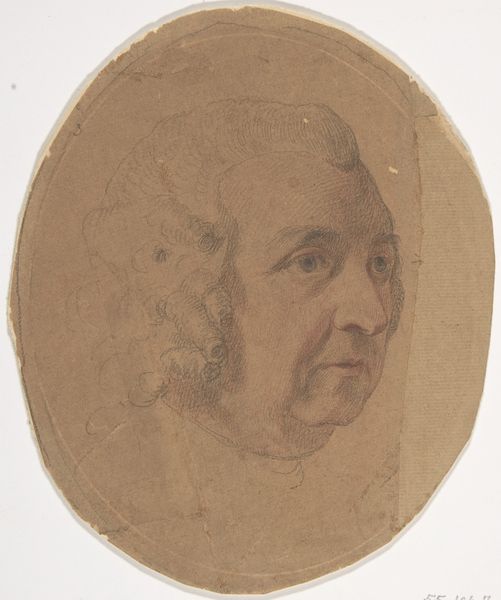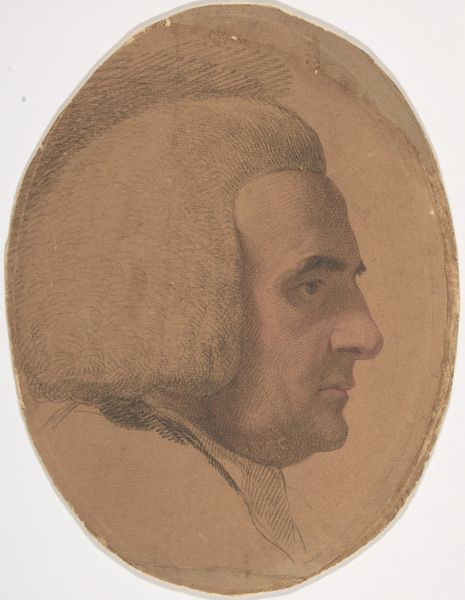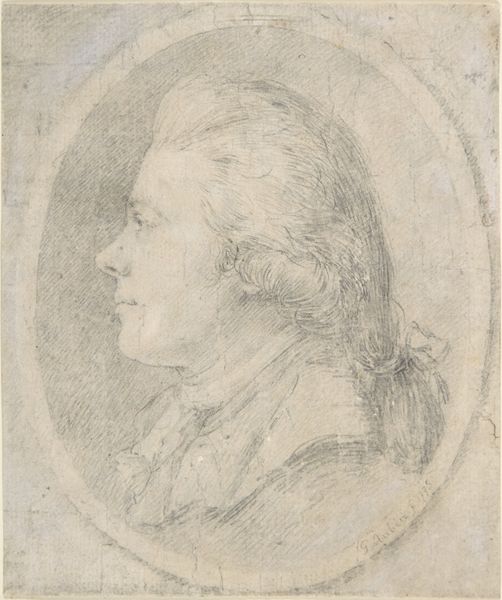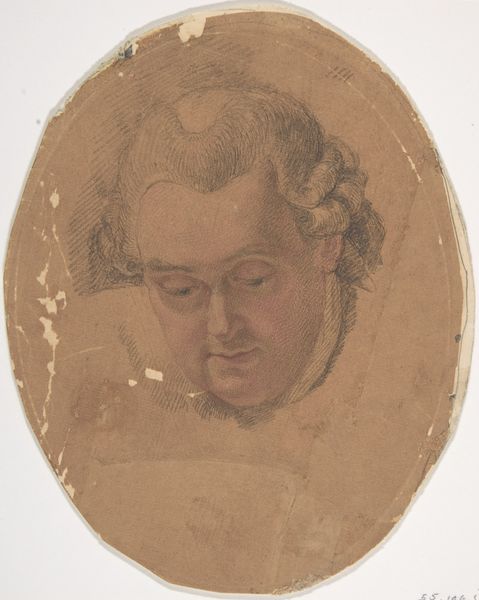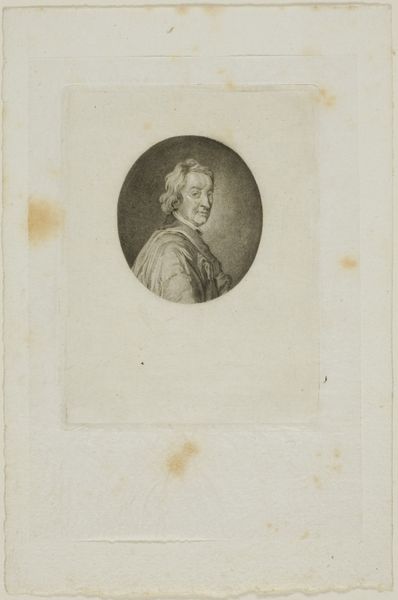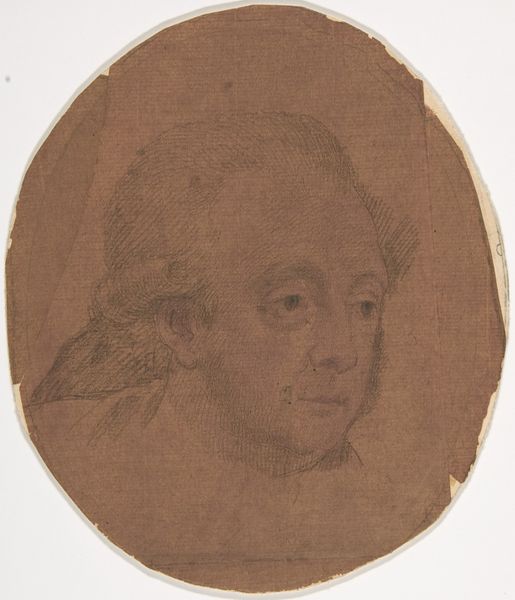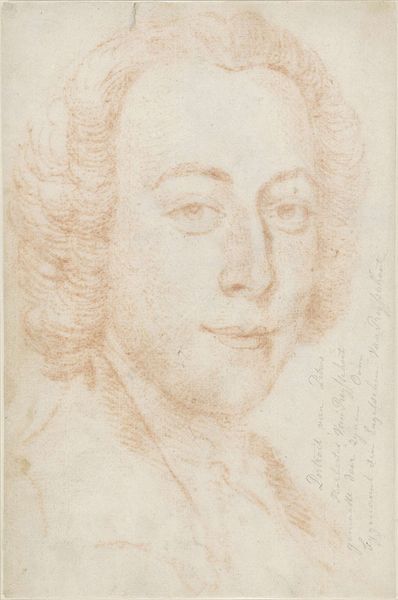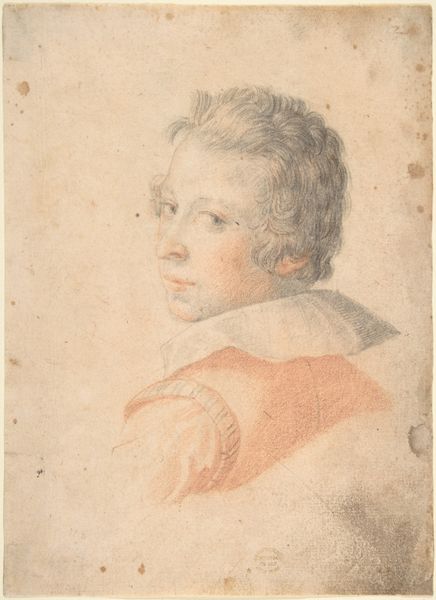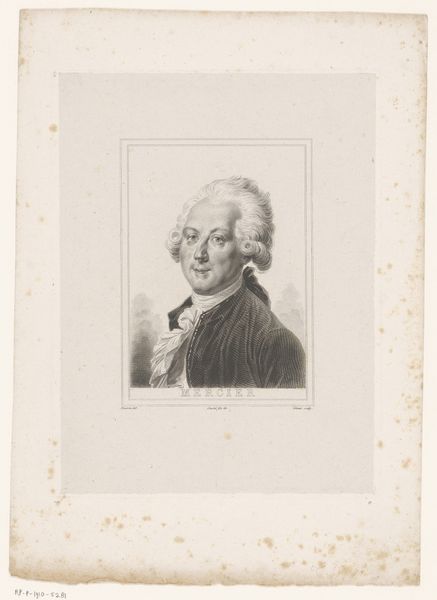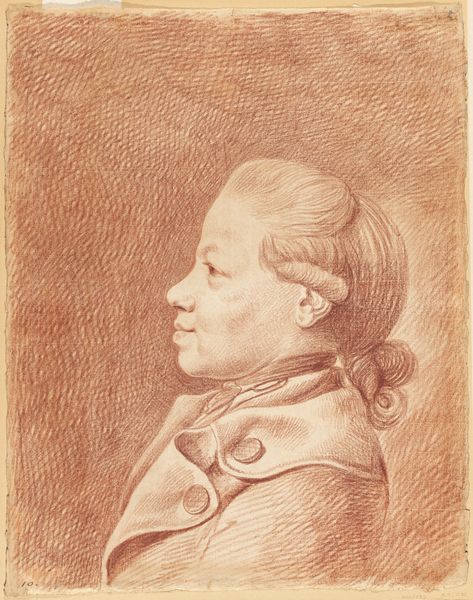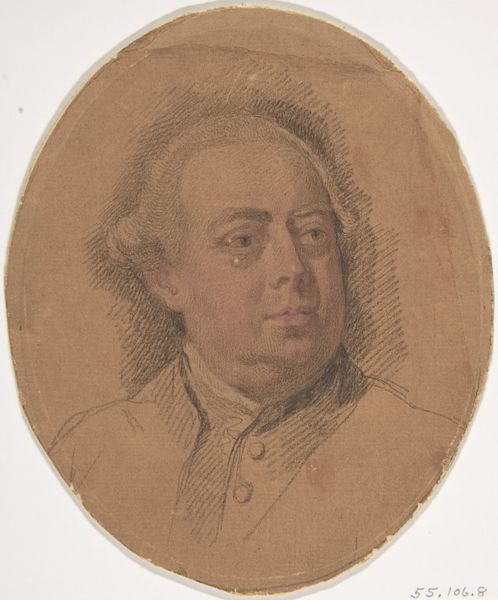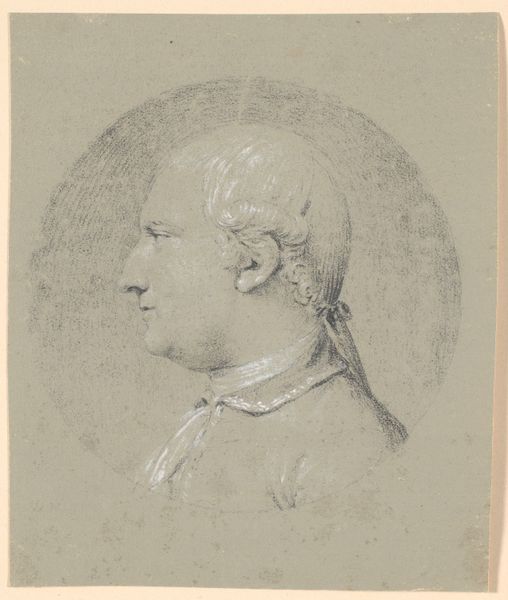
Thomas Howard, 3rd Earl of Effingham and 9th Baron Howard 1764 - 1802
0:00
0:00
Dimensions: 5-1/2 x 4-1/2 in. (14.0 x 11.4 cm)
Copyright: Public Domain
Curator: This drawing captures Thomas Howard, the 3rd Earl of Effingham. Attributed to Francesco Bartolozzi, it likely dates between 1764 and 1802. You can find this intimate portrait housed at the Metropolitan Museum of Art. Editor: Immediately, there's a softness here, almost vulnerable. It's the kind of sketch you imagine an artist doing in a quiet moment, maybe not even intending for it to be seen so widely. You can almost smell the charcoal. Curator: It’s rendered in charcoal and graphite, typical media for studies. It seems more intented for print making. Notice the oval shape of the composition – this creates an intimacy that enhances its captivating qualities. The piece adheres to neoclassical style which emphasizes a formal and straightforward structure. Editor: Definitely neoclassical, and yet, it's caught in this delicious tension between that and the emerging Romantic sensibility. Look at the way the lines are more implied than strictly defined, that unfinished quality... it feels like a secret glimpse behind the polished facade of aristocracy. This piece prompts reflection on what an Earl means as a symbol in this context, almost like a consumer item. Curator: The sketch allows for speculation and creative thought, precisely like art is meant to! Do you think it humanizes him? Makes him seem like less of a figurehead? Editor: Absolutely. There's a kind of raw honesty in the medium itself. Graphite and charcoal are such immediate materials; they record the slightest shift in pressure, in mood. I wonder about Bartolozzi's studio practice... Did the Earl sit for him, enduring the quiet scrutiny, or was this constructed later from other sources? How much collaboration or submission did Howard offer in making this product? The process interests me! Curator: I like how that informs our reading of the image. It does give the work new levels of resonance when you consider production like that, rather than merely its subject or aesthetics. What do you take away from the work overall? Editor: It's a beautiful dance of light and shadow, of intention and accident. More than the man himself, it shows us the raw materiality of portraiture in its historical moment, really opening my eyes and prompting considerations. Curator: For me, it is that quality of captured contemplation... a fleeting moment that holds an unexpected depth. Thanks for sharing your considerations!
Comments
No comments
Be the first to comment and join the conversation on the ultimate creative platform.
